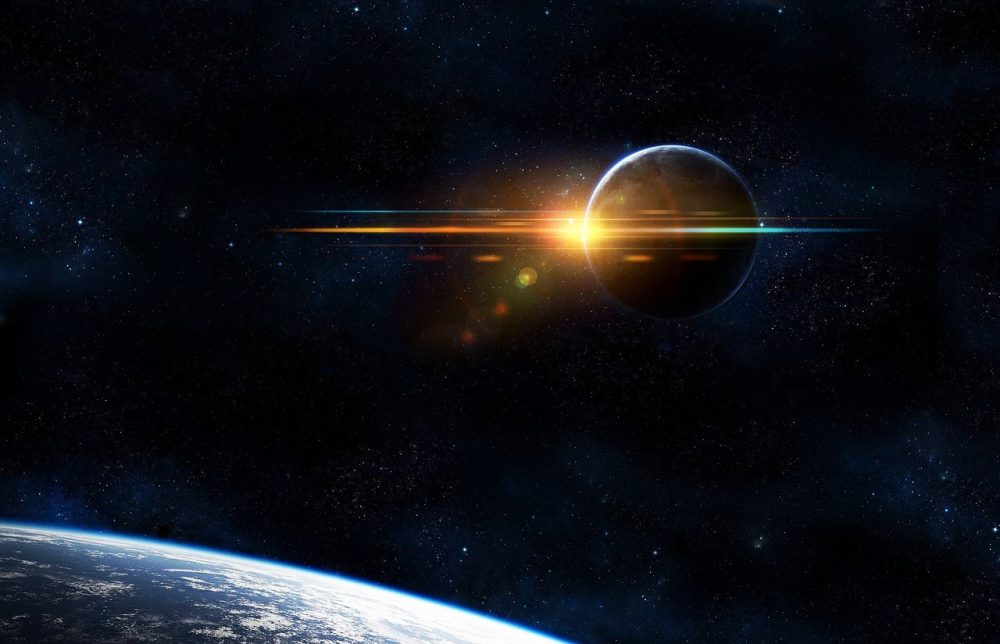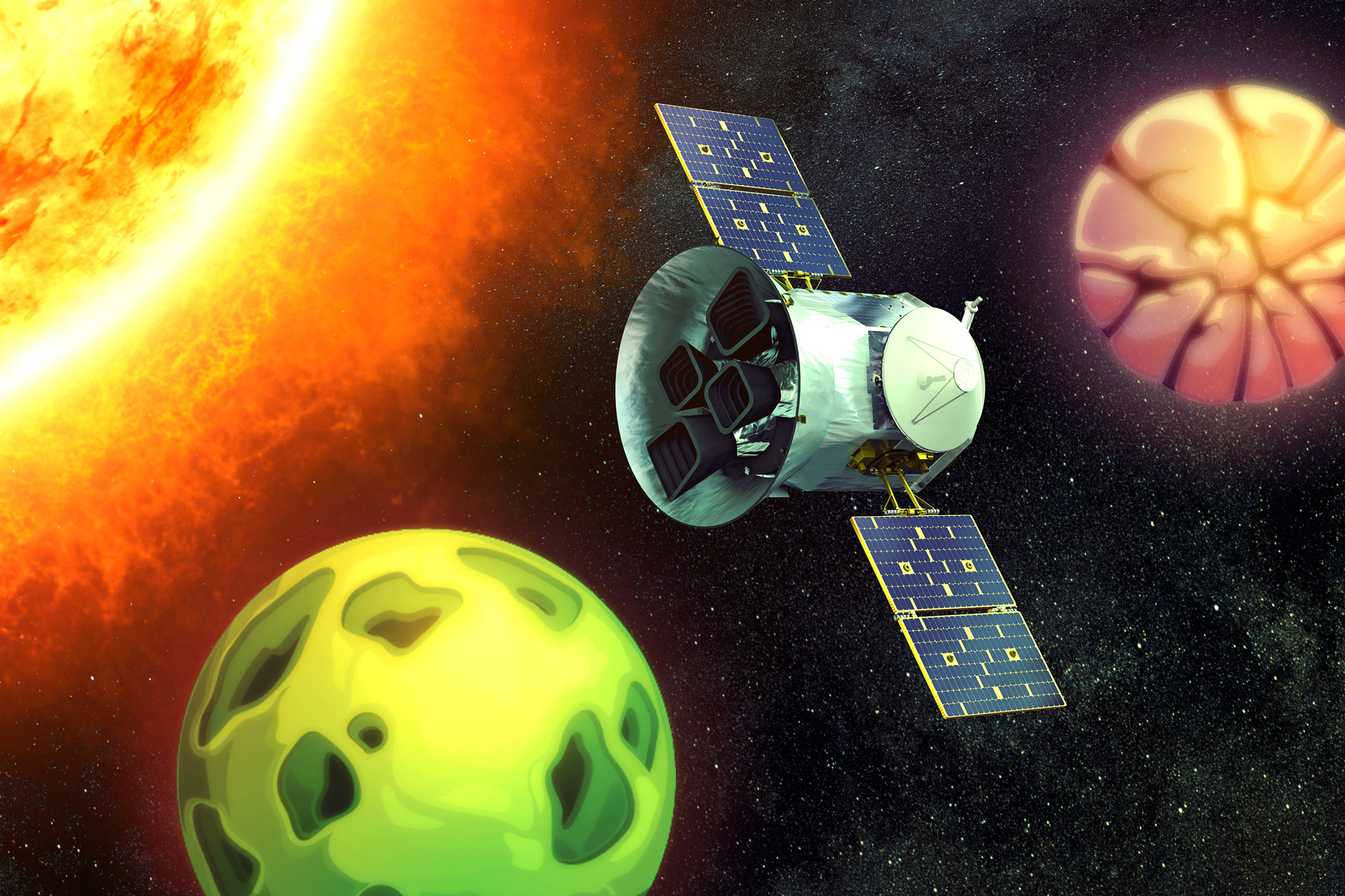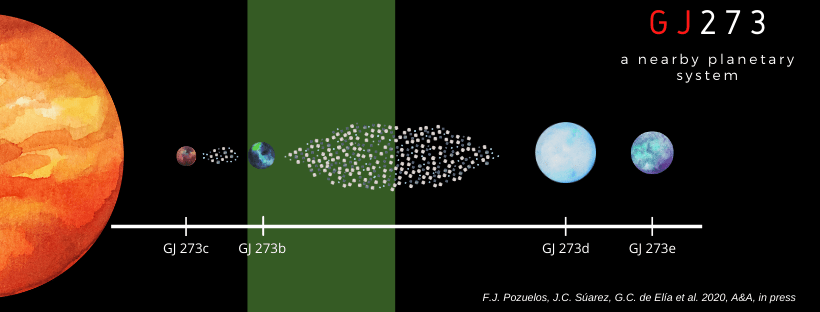The very same star system was picked by scientists back in 2017 to send an intergalactic message to, in hopes that an alien civilization inhabiting one of the planets would receive and decipher the message.
Astronomers have identified a nearby planetary system that is likely to harbor life as we know it. The star system is home to Luyten’s star, a red dwarf in the constellation Canis Minor, located approximately 12.23 light-years from Earth.

Scientists from the University of Granada (UGR) have discovered that the star GJ 273, one of the closest to planet Earth and known as Luyten, houses a planetary system as complex as the Solar System itself and could have the capacity to harbor life.
In an article published in the international journal Astronomy & Astrophysics, the researchers show the complexity of the planetary system orbiting Luyten’s star, which is likely made up of multiple planets and reservoirs of smaller bodies (asteroids and comets.)
Astronomers say that one of the world’s orbiting Luyten’s Star could even harbor life as we know it.
“It could even harbor water, due to the statistics and simulations we have carried out, although we do not yet have other direct evidence,” explains Francisco J. Pozuelos, a researcher at the University of Liege (Belgium) and lead author of the publication.

NEWSLETTER
Never miss a news release from the Curiosmos team.
This complexity of the Luyten planetary system, similar to that of the Solar System, makes it an excellent candidate for searching for traces of life with future space missions.
The Luyten star planetary system is of special interest. The fourth closest planetary system to the Sun orbits around a dwarf star at a distance of 12.23 light-years away and houses a planet in the habitable zone. In terms of proximity to Earth, Luyten’s Star is just behind Proxima Centauri (about 4.24 light-years), Ross-128 (at 10.99 light-years), and GJ 1061 (at 11.96 light-years).

An illustration of Luyten’s star. Image Credit: F.J. Pozuelos / J.C. Suarez / G.C. de Elia et al. 2020.
The system has two confirmed planets (named GJ 273b and GJ 273c) and two others to be confirmed (whose names are GJ 273d and GJ 273e).
The latter have been analyzed in the new study. According to the authors, the global dynamic analysis, including these two candidate planets, makes the system highly stable and highly probable.
In this scenario, the authors predict that these two candidates would have somewhat smaller masses than Neptune, ranging between 9 and 12 times the mass of Earth, known as mini-Neptunes in astrophysical jargon.
Of the already confirmed planets, GJ 273c has a mass similar to that of Earth, while GJ 273b is considered a super-Earth.
The latter is interesting. Its orbit is near the inner edge of its host star’s habitable zone. It is under the effects of tidal warming (the same phenomenon that tides exist on Earth due to gravitational interaction between our planet, the Moon, and the Sun).

As scientist Juan Carlos Suárez at the UGR and co-author of this work, explains, “Tidal warming makes GJ 273b an exciting planet since this makes it compatible with the development and existence of a biosphere.”
Another similarity with the Solar System’s complexity is the presence of deposits of smaller bodies, as the researchers predict.
These are asteroids such as those found in the asteroid belt (between Mars and Jupiter) or the Kuiper belt (beyond Neptune) in the Solar System, whose impact on the presence of water or the production of organic compounds could be important, as it is for the Solar System.
Scientists predict such deposits around Luyten, which, if confirmed, could play an important role in the emergence and maintenance of life in GJ 273b.
Interestingly, back in October 2017, scientists picked the Luyten Star System to send an intergalactic message to. Researchers beamed a signal to Luyten’s Star, including a scientific and mathematical tutorial, as well as 33 short musical compositions, to contact possible alien beings inhabiting the system and capable of decoding our message. Whether or not someone is there, we don’t know.
If, by chance, someone did get our message, it would take around 25 years for us to hear back from any potential alien civilization in the star system.
© 2022 Petri Pixel. All rights reserved. This material may not be published, broadcast, rewritten or redistributed without permission.